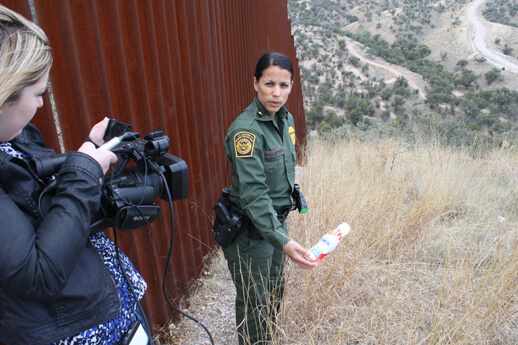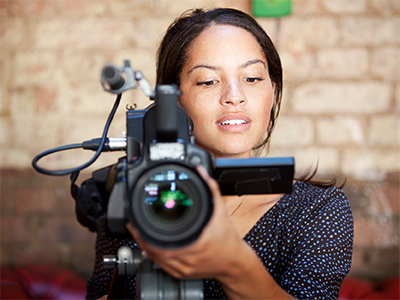Delving Into the Mechanisms of Legal Videography: Unveiling Its Procedure in Shielding Genuine Visual Testament for Judicial Proceedings
In the world of judicial procedures, the duty of legal videography stands as a keystone in protecting and offering visual proof. As technology continues to advance, the systems behind lawful videography have come to be increasingly complex, offering a crucial layer of authenticity to testaments captured on video.
Historic Evolution of Legal Videography
Checking out the historical progression of lawful videography discloses a significant change in the recording and discussion of visual evidence within the legal landscape. In the past, legal process greatly relied on composed photographs and records to document events and supply proof. However, with the introduction of video innovation, the lawful sector observed a paradigm shift in how visual statement was caught and provided.
The advancement of lawful videography can be mapped back to the late 20th century when innovations in video clip recording tools made it extra accessible for usage in court rooms. This technical innovation not just improved the accuracy and dependability of visual proof yet additionally revolutionized the way cases were presented to courts and judges (Legal Videography). Attorneys started to identify the convincing power of video recordings in conveying emotions, subtleties, and non-verbal hints that composed transcripts or photographs alone might not capture efficiently

Innovation Innovations in Video Clip Paperwork
What vital technological developments have changed video clip documentation in the lawful field? The legal area has actually seen considerable developments in video paperwork technology that have enhanced the credibility and reliability of visual evidence in judicial procedures. Among the essential improvements is high-def (HD) video clip recording capabilities, which provide crystal-clear pictures and sharp information that are critical for precisely recording testaments, faces, and various other aesthetic hints. Furthermore, the integration of timestamping and metadata attributes in video paperwork devices has actually allowed accurate documents of when and where the video was recorded, making sure the integrity of the evidence presented in court.
Furthermore, advancements in video clip security and watermarking innovations have actually boosted the security and tamper-proof nature of video proof, guarding it versus unauthorized alterations or meddling. In addition, the development of cloud storage space services and remote access abilities has structured the storage space, access, and sharing of video clip evidence, facilitating smooth partnership amongst attorneys and making sure efficient accessibility to important visual statements when required. These technical innovations in video clip documentation have unquestionably changed the legal area, improving the precision, credibility, and admissibility of aesthetic evidence in judicial procedures.
Duty of Legal Videographers in Courtroom Settings
The evolution of video documentation modern technology in the lawful area has actually demanded a crucial duty for lawful videographers in court room settings, making sure the stability and integrity of visual statements presented throughout judicial procedures. Lawful videographers play a fundamental duty in catching and protecting exact visual proof that can be critical in lawsuit. Their duty encompasses establishing tools, recording procedures, and generating top quality video clips that accurately show the occasions in the courtroom.
In courtroom setups, lawful videographers need to comply with strict guidelines and criteria to maintain the credibility of the visual record. They need to have a keen eye for information and an extensive understanding of legal treatments to ensure that the video footage they catch is a real depiction of the occasions that transpired. In addition, legal videographers typically function very closely with legal groups to guarantee that the video evidence lines up with the situation's requirements and can be efficiently provided in court to sustain the legal debates being made. Generally, the role of lawful videographers in courtroom settings is vital in maintaining the principles of justice and making sure the transparency of legal procedures.

Ensuring Admissibility and Integrity of Video Proof
To maintain the reliability of aesthetic proof offered in legal procedures, guaranteeing the admissibility and integrity of video clip proof is an important obligation for lawful videographers. Admissibility describes the approval of evidence by the court, and for video clip proof to be permissible, it should satisfy particular requirements. Lawful videographers play more a vital check my site duty in making sure that the video clips they capture follow the rules of proof, such as relevance, authenticity, and reliability.
Integrity of video clip proof involves preserving the creativity and accuracy of the video footage from the moment it is tape-recorded up until it exists in court. This consists of safely keeping the video clip data, recording the chain of custodianship, and preventing any kind of meddling or alterations. Lawful videographers should stick to strict protocols to ensure the integrity of the video proof and protect against any type of difficulties to its credibility.
Future Trends in Legal Videography
Offered the increasing reliance on innovation in lawful procedures, lawful videographers are positioned to embrace cutting-edge developments shaping the future of aesthetic statement capture and presentation. Among the noticeable fads imminent is the combination of virtual fact (VR) and boosted truth (AR) modern technologies into legal videography. These modern technologies have the potential to change exactly how visual evidence exists in court rooms, enabling courts and courts to submerse themselves in the scene of the criminal activity or event.
In addition, using expert system (AI) formulas for video clip evaluation is anticipated to improve the process of evaluating and analyzing large amounts of video clip footage. AI can assist in identifying vital minutes, abnormalities, and patterns within video clips, enhancing the performance of legal investigations.

Conclusion
To conclude, lawful videography has actually played an essential role in giving authentic visual proof for judicial procedures. Through technical improvements and the proficiency of legal videographers, the honesty and admissibility of video proof are ensured in courtroom setups. As legal videography proceeds to progress, it will be important to promote standards that preserve the precision and dependability of aesthetic testimony for the future of legal proceedings.
Taking a look at the historical progression of lawful videography exposes a considerable transformation in the recording and presentation my website of aesthetic proof within the legal landscape.The development of video clip paperwork innovation in the legal field has actually demanded a vital duty for lawful videographers in courtroom settings, guaranteeing the integrity and dependability of visual statements provided throughout judicial process. In addition, legal videographers frequently function carefully with lawful teams to ensure that the video clip proof straightens with the case's needs and can be properly offered in court to sustain the lawful arguments being made.To maintain the trustworthiness of aesthetic evidence offered in legal proceedings, ensuring the admissibility and stability of video proof is a vital responsibility for lawful videographers. As legal videography proceeds to evolve, it will certainly be essential to maintain requirements that keep the accuracy and integrity of visual testimony for the future of legal procedures.
Comments on “How to Pick the Best Legal Videography Service for Your Needs”